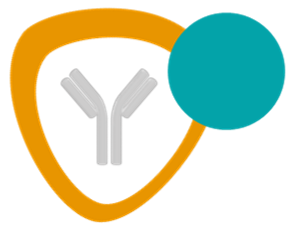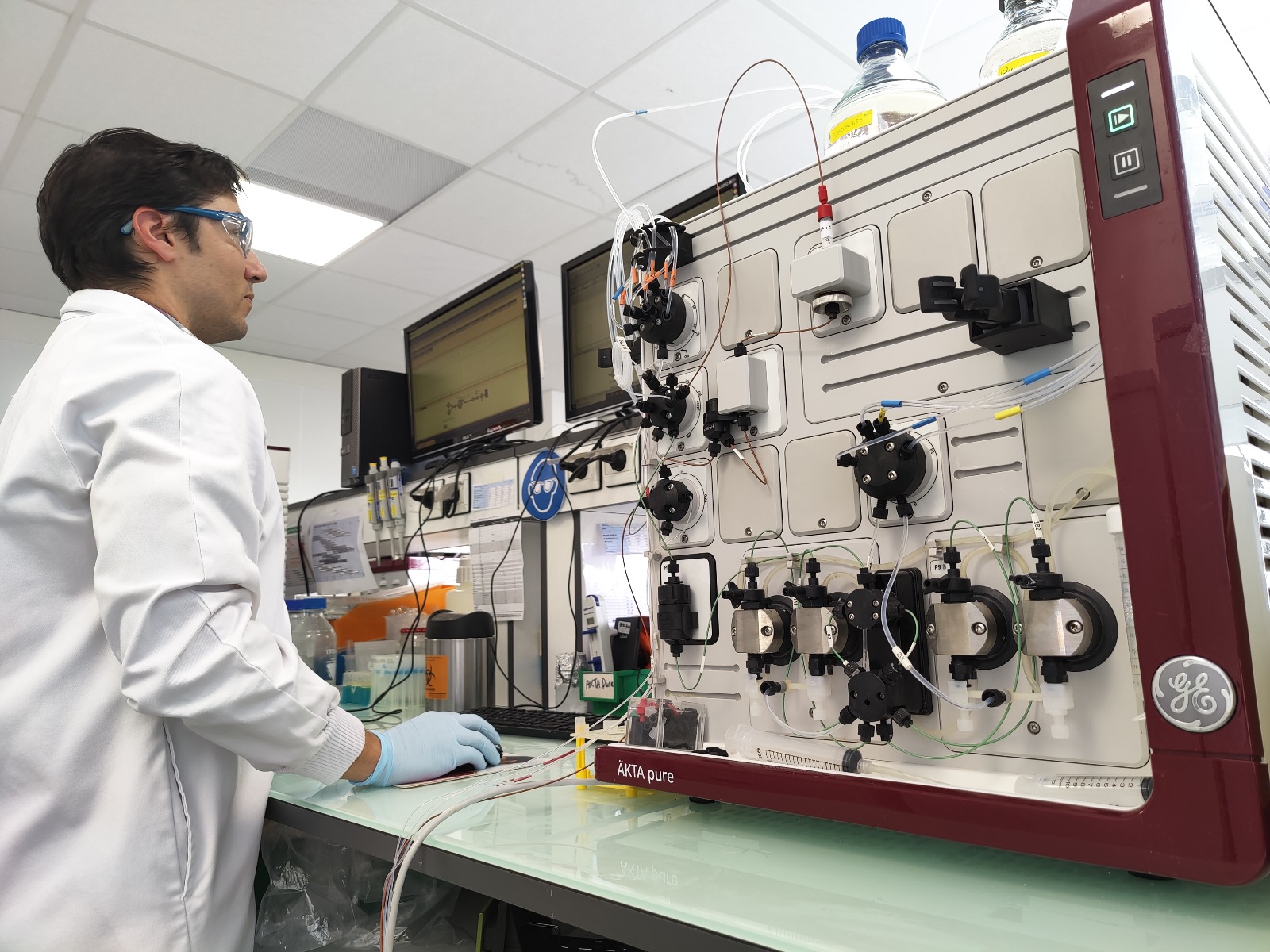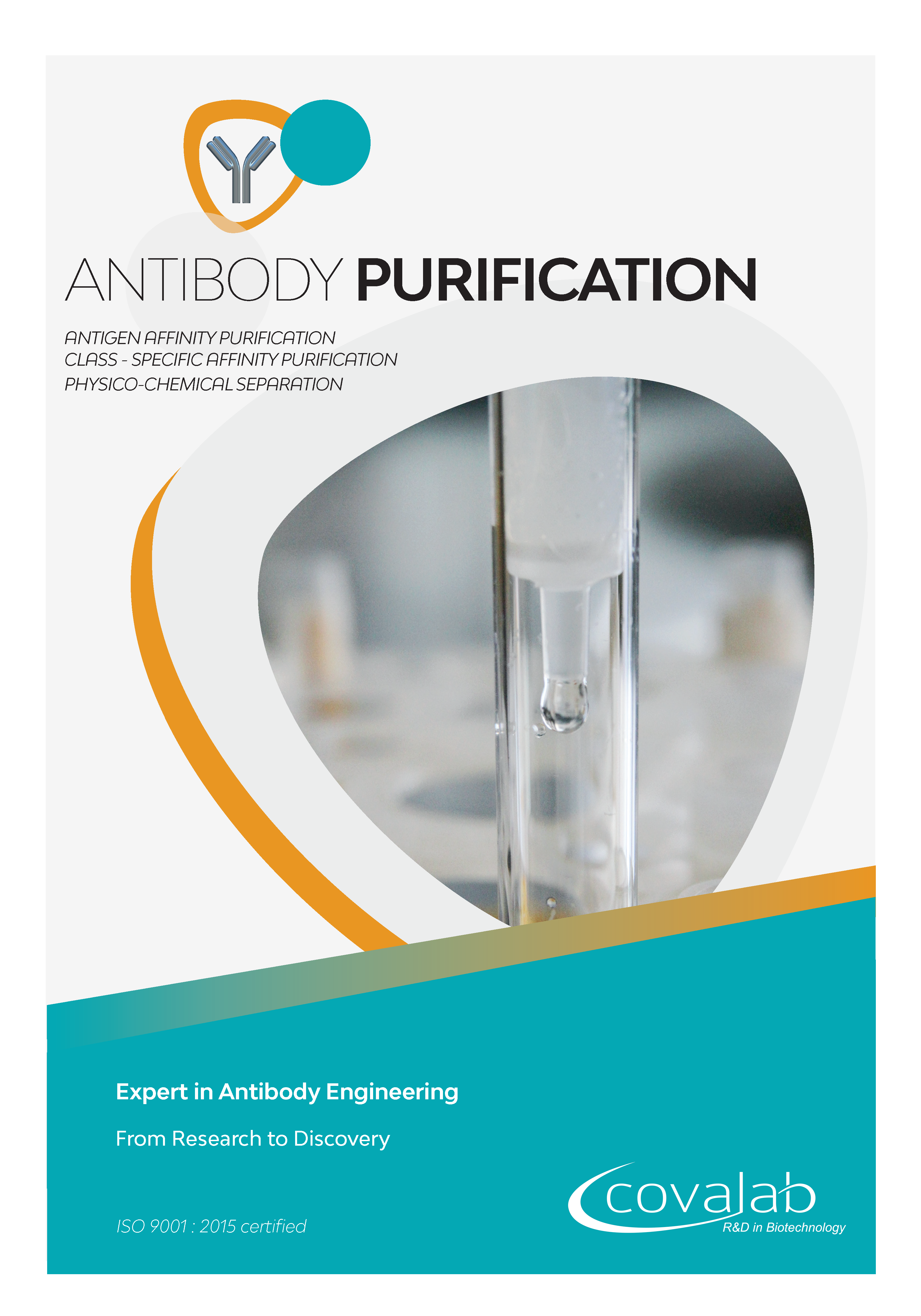We use cookies to make your experience better. To comply with the new e-Privacy directive, we need to ask for your consent to set the cookies. Learn more.
 ANTIBODY PURIFICATION SERVICE
ANTIBODY PURIFICATION SERVICE
Our engineers offer high quality purification, whether you have a project in progress or you simply need our expertise.
Antibody purification involves selective separation of antibodies from other plasma components (polyclonal antibodies), or from ascitic fluid or cell culture supernatant after large scale production using hybridomas (monoclonal antibodies).
We carry out various methods to purify antibodies ranging from poorly to highly specific ones.
 Physico-chemical separation
Physico-chemical separation
AMMONIUM SULPHATE PRECIPITATION |
SIZE EXCLUSION |
ION EXCHANGE CHROMATOGRAPHY |
| Because of their higher hydrophobicity, mainly IgM antibodies precipitate at lower concentrations of ammonium sulphate than most proteins and other serum components. Ammonium sulphate precipitation is then frequently used to enrich and concentrate antibodies from serum, ascitic fluid or cell culture supernatant. | Dialysis membranes, size exclusion resins, and diafiltration devices that feature average molecular weight cut-offs can be used to separate immunoglobulins (>140kDa) from small proteins and peptides. Gel filtration and dialysis are more commonly used following other purification steps, such as ammonium sulphate precipitation. | Ion exchange chromatography (IEC) uses positively or negatively charged resins to bind proteins based on their net surface charge. This method allows to purify antibodies and proteins with high resolution. Once optimized, IEC is a cost-effective, gentle and reliable method of antibody purification. |
 Class-specific affinity purification
Class-specific affinity purification
PROTEIN A |
PROTEIN L |
PROTEIN G |
| Protein A binds to the Fc region of immunoglobulins, especially IgG. The interaction with IgG vary between species, and even within a species. Thanks to its low price, this protein is widely used for large-scale purification of cell culture supernatants and ascitic fluids, and usually yields high purity and recovery rate. | Protein L which bind immunoglobulins through the light chains, without hindering their antigen-binding capacity. This protein is thus able to bind not only a wider range of antibody classes including IgA, IgD, IgE, IgG and IgM but also antigen-binding antibody fragments such as Fab, F(ab’)2 or scFV. However, binding is restricted to certain subtypes of kappa light chains, and should therefore be restricted to the purification of samples of monoclonal antibodies whose light chain isotype is known. | Protein G is a bacterial cell wall protein isolated from group B streptococci. Like protein A, protein G binds to most mammalian immunoglobulins through their Fc regions. More specifically, protein G is able to bind strongly to all human and mouse subclasses. The unique immunoglobulin-binding characteristics of protein G can be used for the purification of mammalian monoclonal and polyclonal antibodies that do not bind well to protein A. |

 Antigen affinity purification
Antigen affinity purification
This can be performed by immobilizing the antigen of interest (e.g., the peptide used to raise the antibody) on a solid phase so that the antibodies that bind specifically to the antigen are retained upon loading of the serum, while other impurities and unspecific IgG are discarded in the flow-through. However, optimization of antigen orientation may be a concern especially in the case of peptides, which could be not easily recognized by antibodies if major binding sites are sterically hindered by the chemical bonds with the agarose beads. Thanks to our expertise in purification and peptide chemistry, we are able to determine the best conditions to allow the most effective antigen-antibody interaction.
Immunoaffinity provides many advantages such as very high purity levels (>99% can be achieved in one step), very high selectivity, and therefore very high resolution, including certitude that the antibody is specific for the antigen of interest.
Anti-post-translational modification antibodies are purified using a specific 3-step antigen affinity purification procedure, for those antibodies require an extremely specific separation between antibodies which are specific for the control peptide and those which are specific to the modified peptide.

The antigen is immobilized on agarose beads with precise orientation and put into the column
![]()
The sample is loaded onto the column. Specific antibodies are retained while others and impurities are discarded

The column is eluted using acidic buffer. specific antibodies are released from the agarose beads

Specific antibodies are assayed against the antigen to confirm their specificity
 Brochures
Brochures

Custom purification
Discover our purification service.
